Conflict Zones
Russia-Ukraine war: List of key events, day 1,133 | Russia-Ukraine war News
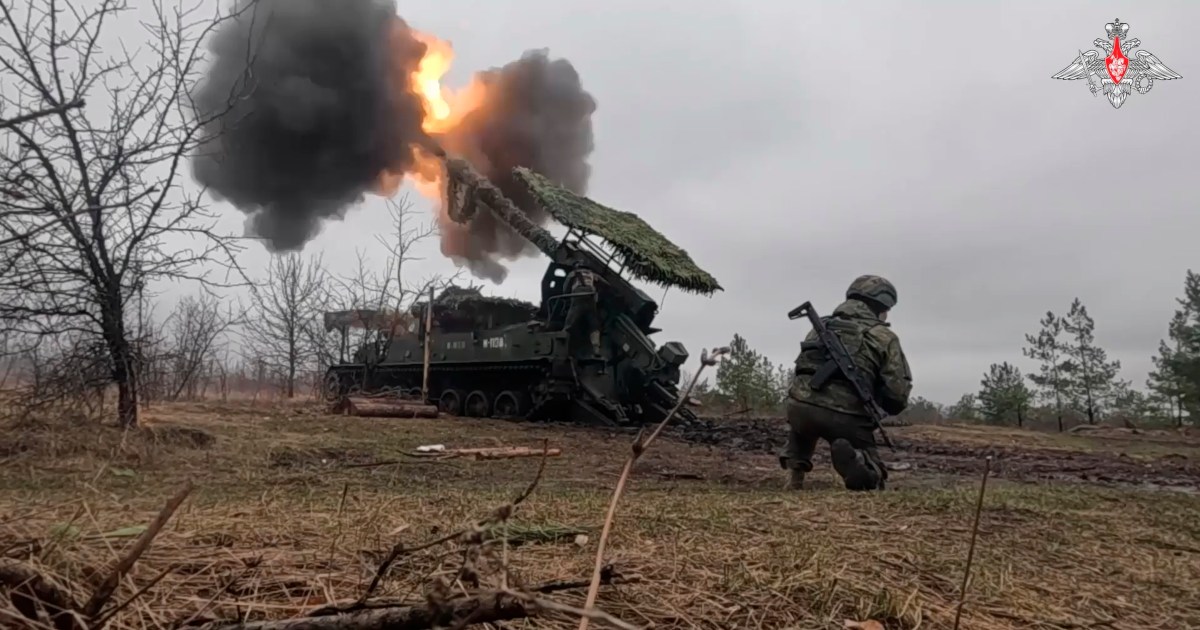
These are the key events on day 1,133 of Russia’s war on Ukraine.
These are the key events from Tuesday, April 1:
Fighting
Ukraine’s Air Force reported that the country had experienced its first night free of attack by Russian drones since December, though Moscow had launched two cruise missiles, which were successfully shot down. It was not immediately known why Russia had not launched drone attacks.
More than 10,700 combat drones and decoy drones – which are intended to draw fire from Ukrainian air defences – have been launched by Russia since the start of the year, Ukraine said.
The Russian Ministry of Defence said its forces took control of the village of Rozlyv in Ukraine’s eastern Donetsk region. Ukraine’s military said Russian forces had launched five attacks on Rozlyv and the nearby village of Kostiantynopil, but did not acknowledge whether Rozlyv had fallen into Russian hands. The Ukrainian General Staff said late on Monday that three battles were still going on in the area.
DeepState, a Ukrainian blog that tracks the 1,000km (600-mile) front line between Russia and Ukraine, reported Russian advances over the past 24 hours near Rozlyv, as well as heavy fighting further east near the contested town of Toretsk.
The governor of Ukraine’s Zaporizhia region, Ivan Fedorov, said Russian shelling killed one person in a front-line settlement that he did not identify.
Ukrainian officials in the Dnipropetrovsk region said Russian shelling injured three people in the town of Nikopol.
The acting governor of Russia’s Rostov region, Yury Slyusar, said Ukrainian drones damaged two high-rise buildings in Taganrog city. He said 85 residents were evacuated from one of the buildings.
Russia advanced 240 sq km (93 sq miles) into Ukrainian territory in March, marking a slowdown for four months in a row, according to data from the United States-based Institute for the Study of War (ISW). Moscow’s advances slowed each month since peaking at 725 sq km (279 sq miles) in November 2024, ISW data shows. Russia took nearly 150 sq km (57.9 sq miles) less in March than in February. Despite these slowdowns, the last 12 months have been marked by Russian troops advancing in Ukraine.
Ukrainian Foreign Minister Andrii Sybiha told a news conference that tens of thousands of people in southern Ukraine’s Kherson were left without power after Russian strikes damaged a power facility.

Ceasefire
German Minister for Foreign Affairs Annalena Baerbock said that “due to the deadlock” between the US and Russia on forging a ceasefire deal, support by European allies for Ukraine in its war against Moscow was “absolutely crucial”.
Russia cannot accept US proposals to end the war in Ukraine in their current form because they do not address problems Moscow regards as having caused the conflict, Russia’s Deputy Foreign Minister Sergei Ryabkov said. He suggested that Moscow and Washington have so far been unable to bridge differences which Russian President Vladimir Putin raised more than two weeks ago when he said US ceasefire proposals needed reworking.
Senior officials in the administration of US President Donald Trump discussed in recent days the likelihood that the US will be unable to secure a Ukraine peace deal in the next few months and are drawing up new plans to pressure both Kyiv and Moscow, two US officials familiar with the matter told the Reuters news agency. White House and US State Department officials acknowledge that Putin is actively resisting Washington’s attempts to strike a lasting peace accord and have discussed what, if any, economic or diplomatic punishments could push Russia closer to a deal, the sources said.
Ukrainian President Volodymyr Zelenskyy again accused Russia of violating recent ceasefire agreements mediated by the US and called for sanctions on Moscow.
Russia’s Defence Ministry likewise accused Ukraine of launching new drone attacks on energy facilities in Russia’s Belgorod region and in the Russian-occupied part of Ukraine’s Zaporizhia region.
Half of the US Senate – 25 Republicans and 25 Democrats – joined together to propose sanctions that would be imposed on Russia if it refuses to engage in good-faith negotiations for peace with Ukraine.
Aid
Zelenskyy said he hopes Germany’s presumptive next chancellor, Friedrich Merz, will approve the delivery of Taurus cruise missiles to bolster Ukraine’s defence against Russia. Outgoing Chancellor Olaf Scholz had firmly opposed sending Taurus missiles, citing fears of escalating violence.
Zelenskyy said a closed-door meeting with military officials from several partner countries will take place on Friday to further discuss the possible deployment of foreign troops to Ukraine as part of future security guarantees.
Ukraine has received another $3.8bn in financial support from the European Union, Kyiv said.
Sanctions
The value of Russian assets frozen in Switzerland since the start of Moscow’s full-scale invasion of Ukraine has risen by nearly $2bn in the past year to more than $8bn, the Swiss government said.
Regional security
Polish authorities said they charged a 47-year-old Ukrainian citizen with working for Russian intelligence after he was discovered last month conducting reconnaissance of military facilities in Poland.
Sweden, where authorities have warned that the country should prepare for the risk of war, has announced a 100-million krona ($10m) investment to check and renovate its civil defence shelters. Sweden has 64,000 defence bunkers with space overall for about 7 million people. The move comes as Sweden and other European nations have announced plans to step up defence spending in the wake of Russia’s invasion of Ukraine and doubts about Trump’s commitment to NATO.
Finnish Prime Minister Petteri Orpo said the country plans to withdraw from the international treaty banning antipersonnel mines, the latest signatory moving to ditch the ban over threats from Russia.
France said it will deliver several hundred Mistral surface-to-air missiles to Denmark, as French President Emmanuel Macron and Denmark’s King Frederik X pledged a “stronger” Europe. The move comes as Denmark has sought European backing to counter Trump’s threats to take over Greenland.
The United Kingdom government said that anyone working in the UK for the Russian state will have to register on a new list launching in July or face jail. UK Minister of State Security Dan Jarvis told parliament that Russia would be subject to the most stringent restrictions of the Foreign Influence Registration Scheme.
Diplomacy
Chinese President Xi Jinping is to be the guest of honour when Russia marks the 80th anniversary of the end of World War II with the annual Victory Day parade in Moscow’s Red Square on May 9, Putin said.
Putin received the wanted leader of Bosnia’s ethnic Serbs, Milorad Dodik, in the Kremlin, a day after Dodik had announced a visit to Moscow.
Russian Foreign Minister Sergey Lavrov discussed with his Chinese counterpart, Wang Yi, the situation on the Korean Peninsula, Iran’s nuclear programme, the state of affairs in Central Asia, as well as the conflict in Ukraine and the need for a lasting peace agreement, the Ministry of Foreign Affairs in Moscow said.
France’s new ambassador to Russia arrived in Moscow, several months after his predecessor left, as tensions between Paris and the Kremlin remain high over Ukraine.
Senior Russian official Kirill Dmitriev is expected to visit Washington, DC, this week and will meet with Steve Witkoff, a Trump administration official, for talks about strengthening relations between the two countries as they seek to end the war in Ukraine.
Ukraine said that Kyiv and Washington were holding new talks on an agreement that would give the US access to Ukrainian natural resources in return for more support.
Conflict Zones
Trump says he thinks Iran wants direct talks with US | Donald Trump News
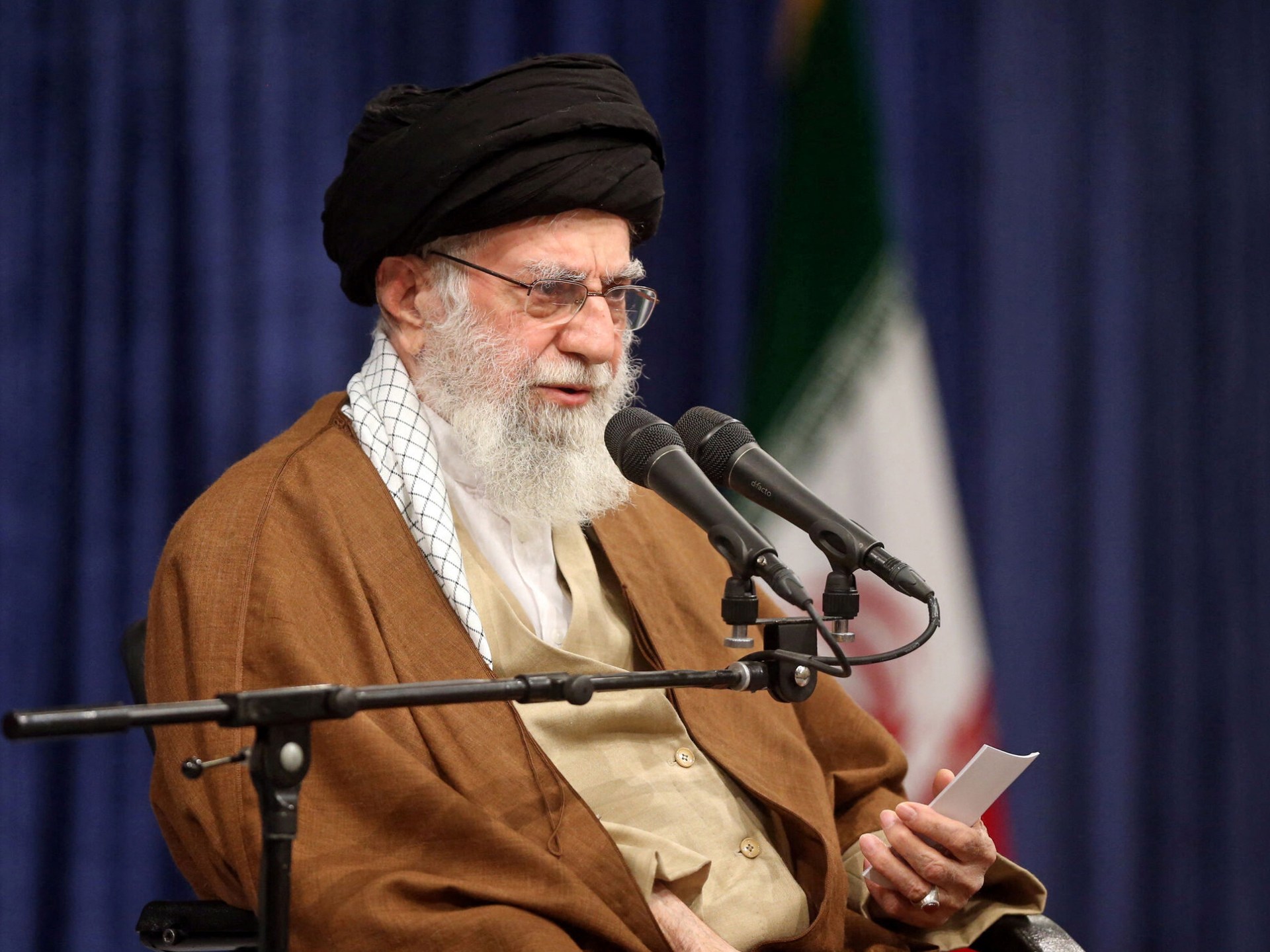
US president says Iran initially wanted talks through intermediaries, but he thinks Tehran has changed its position.
Washington, DC – Donald Trump has suggested that Iran may agree to direct talks with the United States despite the intensifying tensions and back-and-forth threats between the two countries.
Speaking to reporters on Thursday, the US president appeared optimistic about the prospect of face-to-face diplomacy with Tehran.
“I think it’s better if we have direct talks,” he said. “I think it goes faster, and you understand the other side a lot better than if you go through intermediaries. They wanted to use intermediaries. I don’t think that’s necessarily true any more.”
Last month, Trump sent a letter to the Iranian leadership calling for negotiations to address Iran’s nuclear programme. The US president has also been regularly threatening Iran with military strikes.
Tehran has rejected the prospect of direct talks with Washington but said it is open to indirect diplomacy.
It is not clear whether Iran has indeed changed its stance or if Trump is speculating about Tehran’s position.
The US administration has been piling up sanctions against Iran with the aim of completely choking off the country’s oil exports – particularly to China.
In 2018, during his first term as president, Trump nixed a multilateral deal that saw Iran scale back its nuclear programme in exchange for the lifting of international sanctions against its economy.
Tehran maintains that it is not seeking a nuclear weapon. Israel, the top US ally in the region, is widely believed to have an undeclared nuclear arsenal.
Since returning to office in January, Trump has promised to bring “peace” to global conflicts – though he has addressed Iran with a mix of public diplomatic overtures and bombastic warnings.
“If they don’t make a deal, there will be bombing,” he said last week.
Iranian officials have responded with their own threats, suggesting that, if the country is attacked, it will strike back against US troops and interests in the Middle East.
“The US must know that, when facing Iran, threats will never achieve anything,” Iranian Supreme Leader Ayatollah Ali Khamenei said last month, according to Iran’s Tasnim News Agency.
“The US and others must know that, if they commit any malicious act against the Iranian nation, they will receive a severe blow.”
But Tehran’s position in the region appears to have weakened amid the ongoing war in Gaza and beyond.
Israel, for example, killed the top political and military leadership of Lebanon’s Hezbollah, Iran’s once-fearsome ally. Iran lost another key partner after armed opposition groups toppled Syrian President Bashar al-Assad in December of last year.
“I think they’re concerned, I think they feel vulnerable, and I don’t want them to feel that way,” Trump said on Thursday, referring to Iran.
Conflict Zones
Russia-Ukraine war: List of key events, day 1,134 | Russia-Ukraine war News
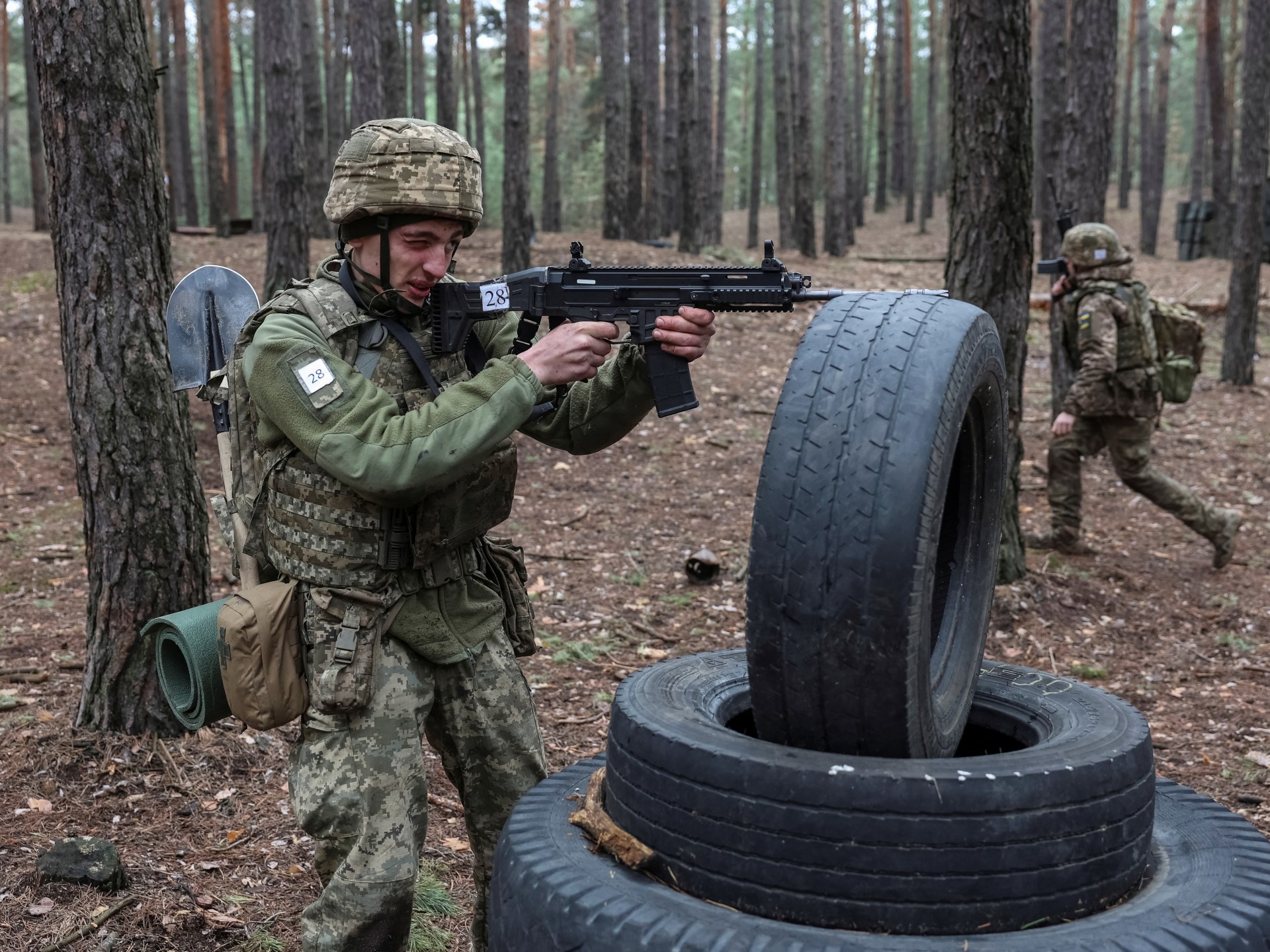
These are the key events on day 1,134 of Russia’s war on Ukraine.
These are the key events from Wednesday, April 2:
Fighting
One person was killed and two others injured in a Russian overnight attack on southeast Ukraine’s Zaporizhia region, Regional Governor Ivan Fedorov said.
A Russian ballistic missile strike on Ukraine’s Kryvyi Rih killed at least four people and injured 14 others, including two children, Ukrainian authorities said.
An infant, a seven-year-old boy and six others were also injured in a drone attack on Ukraine’s Kharkiv region, said Oleh Syniehubov, the region’s governor. Kharkiv’s Mayor Ihor Terekhov said 15 drone strikes were carried out in the region.
At least 60 people were forced to evacuate from their homes in the Russian city of Kursk after falling debris from intercepted Ukrainian drones hit their apartment buildings, acting governor, Alexander Khinshtein, said.
Russia’s state news agencies TASS and RIA Novosti report that Russian forces destroyed 93 Ukrainian drones overnight, most of which were destroyed over the Kursk region.
The Ukrainian air force said it shot down 41 of 74 Russian drones launched towards Ukraine overnight. Another 20 drones failed to reach their targets due to electronic jamming measures, the air force said.
Ukrainian President Volodymyr Zelenskyy said nearly 4,000 people were left without electricity after a Russian drone hit a substation in Ukraine’s northeastern Sumy region, and artillery fire damaged a power line in the central Dnipropetrovsk region.
Moscow’s Ministry of Defence also accused Kyiv of hitting Russian energy facilities twice in the past 24 hours despite a mutual moratorium on energy strikes brokered by the United States.
Germany’s Deutsche Presse-Agentur (DPA) news agency reported that Russia had destroyed one of its own dams in the Belgorod border region using an aerial bomb. The reason for the dam’s destruction was not given.
Oil and Gas
Russia said it ordered the closure of the Black Sea port terminal handling Kazakhstan’s oil exports and US giants Chevron and Exxon Mobil, after two inspections on moorings for vessels at the terminals.
Ceasefire
Russia and Ukraine accused each other of breaching the US-brokered moratorium on energy strikes after both countries reported damage to energy facilities due to alleged violations by both sides.
Politics and Diplomacy
Eleven Ukrainian children were returned to Kyiv from Russia and Russian-occupied Ukraine under the Bring Kids Back UA initiative, President Zelenskyy’s chief of staff, Andriy Yermak, said.
The Kremlin said it is “possible” that Russian envoy Kirill Dmitriev will visit the US and said contact with Washington was ongoing. The Reuters news agency reported that Dmitriev is expected in Washington this week for talks with US President Donald Trump’s administration.
Conflict Zones
‘Live-fire drills’: China conducts second day of war games around Taiwan | Border Disputes News
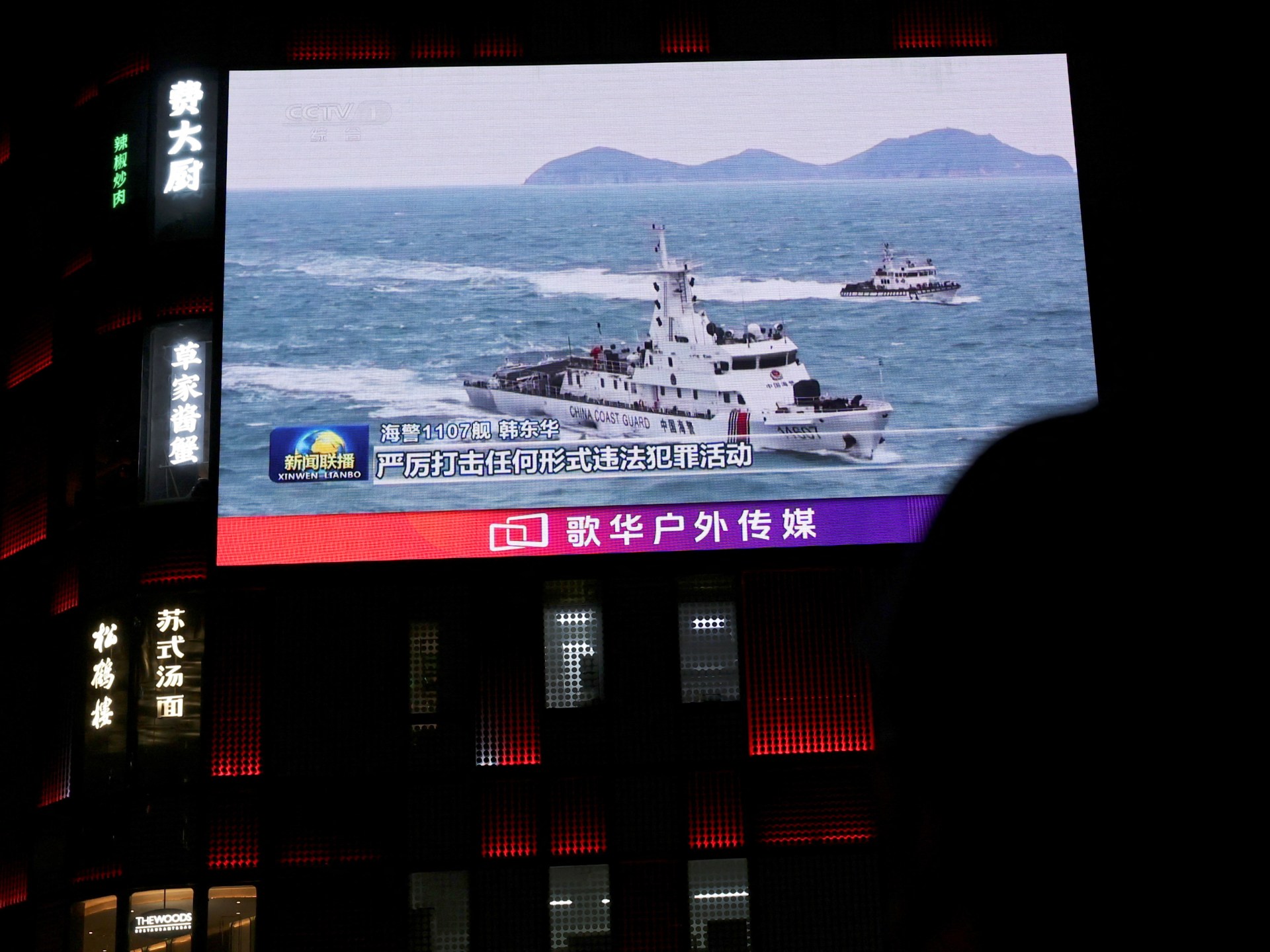
China continues a second day of war games and military drills around Taiwan, including simulated attacks on key targets.
China’s military said it has simulated attacks on high-value targets in Taiwan, including ports and energy facilities, as it carried out “live-fire” military drills around the self-ruled island on the second day of war-game exercises.
The drills on Wednesday, part of an operation titled “Strait Thunder-2025A”, were conducted in the middle and southern parts of the Taiwan Strait as well as the East China Sea, the military said.
“Long-range live-fire drills” were carried out in order to practise hitting “simulated targets of key ports and energy facilities” during the exercises, the military said.
The aim was to “test the troops’ capabilities” in areas such as “blockade and control, and precision strikes on key targets”, said Senior Colonel Shi Yi, spokesman of the Chinese military’s Eastern Theatre Command.
China’s Shandong aircraft carrier was also deployed in the drills, testing the ability to “blockade” Taiwan by integrating naval and air power, the Eastern Theatre Command said.
China’s military published a video of what it said were the live-fire drills that showed rockets, rather than ballistic missiles, being launched and hitting targets on land, and an animation of explosions over Taiwanese cities including Tainan, Hualien and Taichung, all home to military bases and ports.

Taiwan’s President William Lai Ching-te condemned the drills while the island’s defence ministry said China had deployed 21 warships around the island, including the Shandong carrier group, and 71 aircraft and four coastguard vessels on Tuesday.
“China’s blatant military provocations not only threaten peace in the #Taiwan Strait but also undermine security in the entire region, as evidenced by drills near Australia, New Zealand, Japan, Korea, the Philippines & the SCS [South China Sea]. We strongly condemn China’s escalatory behaviour,” Taiwan’s Presidential Office said in a post on X.
On Wednesday, Taiwan said that 76 Chinese military aircraft and 19 naval or government ships had entered waters and airspace near the island over the previous 24 hours, with 37 of the planes crossing the centre line in the 160-kilometre (110-mile) wide Taiwan Strait that forms an unofficial border with mainland China, but which Beijing refuses to acknowledge.
The Shandong aircraft carrier group had also entered Taiwan’s air defence identification zone, a self-defined security area tracked by the Taiwanese military.
Al Jazeera’s Katrina Yu, reporting from Beijing, said the exercises were not the first conducted by China around Taiwan but these latest drills “show how serious Beijing is about honing their capability to blockade the island of Taiwan should they deem necessary”.
“Beijing sees Taiwan, the democratic ruled island, as a breakaway Chinese province, and President Xi Jinping has said time and time again, that whether by peaceful means or by force, it will be unified again with mainland China,” Yu said.
“Taiwanese leader Lai Ching-te has condemned the drills. He says, this is only demonstrating that China is a troublemaker in this region,” Yu added.
The drills are expected to continue until Thursday night and China’s Maritime Safety Administration has announced that an area off the northern part of the eastern province of Zhejiang, more than 500km (310 miles) from Taiwan, will be closed for shipping due to military operations.
-
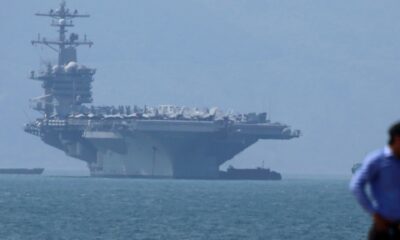
 Conflict Zones2 days ago
Conflict Zones2 days agoUS attacks kill 4 in Yemen as second aircraft carrier sent to Middle East | Military News
-

 Lifestyle2 days ago
Lifestyle2 days agoCooking with kids teaches healthy eating and more
-

 Europe1 day ago
Europe1 day agoLive updates: Trump announces sweeping new tariffs on imports on ‘Liberation Day’
-
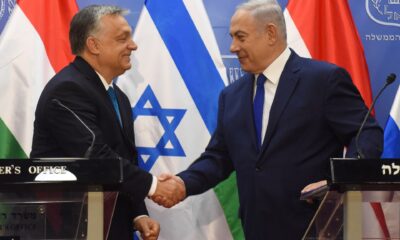
 Middle East2 days ago
Middle East2 days agoIsrael’s Netanyahu heads to Hungary in defiance of ICC arrest warrant | Gaza News
-

 Sports2 days ago
Sports2 days agoFreddie Freeman misses Los Angeles Dodgers game after injuring ankle in shower ‘mishap’
-

 Sports1 day ago
Sports1 day agoDaria Kasatkina: Russian-born tennis player ‘didn’t have much choice’ over switching allegiances to Australia
-

 Europe2 days ago
Europe2 days agoAlex Ovechkin: A leap year ploy could have altered hockey history as Capitals captain closes in on Wayne Gretzky’s ‘unreachable’ goal record
-
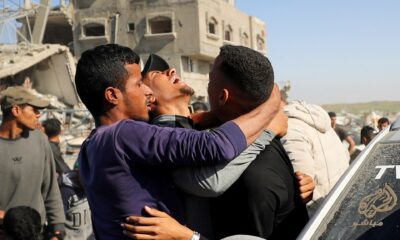
 Middle East2 days ago
Middle East2 days agoIsrael’s war on Gaza deadliest conflict ever for journalists, says report | Gaza News




